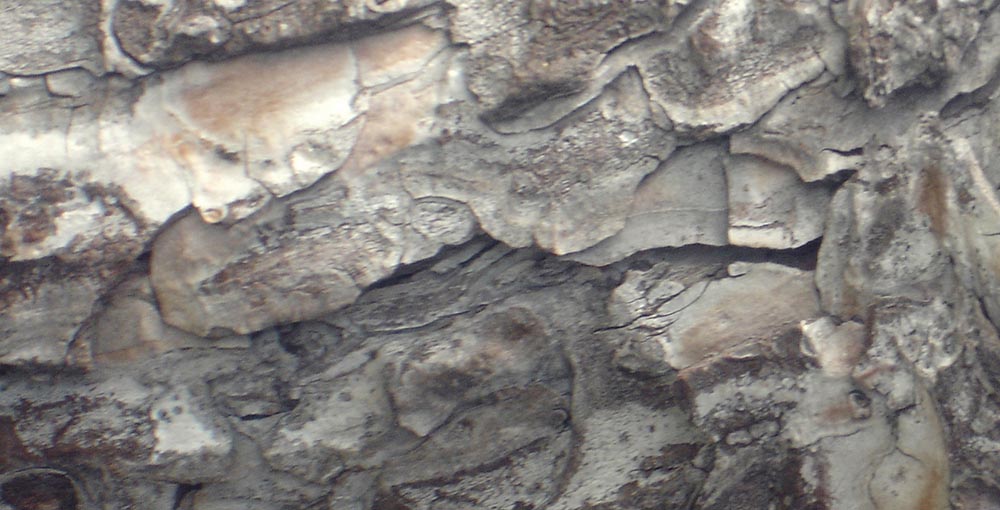Analysis of Bark

Background
Bark is a highly heterogeneous and chemically complex section of woody biomass. It is usually divided into the living inner bark and dead outer bark. There are vast differences in the nature and amounts of various chemicals and extractives in the bark that can be found within even a single species, depending on the age and growth site of the trees sampled and the fraction of bark examined.Celignis founder Daniel Hayes has considerable experience in the chemical and near-infrared analysis of barks and has characterised samples from a variety of different tree species.
Analysis of Bark at Celignis
Celignis Analytical can determine the following properties of Bark samples:
Sugars (Monosaccharides)
Sugar Alcohols and Uronic Acids
Lignin and Extractives
- Lignin (Klason)
- Lignin (Klason - Protein Corrected)
- Lignin (Acid Soluble)
- Acid Insoluble Residue
- Extractives (Ethanol-Soluble)
- Extractives (Water-Soluble)
- Extractives (Exhaustive - Water then Ethanol)
- Lignin S/G Ratio
- Extractives (Water-Insoluble, Ethanol Soluble)
- Protein Content of Acid Insoluble Residue
- Carbon Content of Acid Insoluble Residue
- Hydrogen Content of Acid Insoluble Residue
- Nitrogen Content of Acid Insoluble Residue
- Sulphur Content of Acid Insoluble Residue
Amino
Acids
Thermal Properties
- Moisture
- Ash
- Ash (Acid Insoluble)
- Carbon
- Hydrogen
- Nitrogen
- Sulphur
- Oxygen
- Volatile Matter
- Fixed Carbon
- Gross Calorific Value
- Net Calorific Value
- Chlorine
- Ash Shrinkage Starting Temperature (Oxidising)
- Ash Deformation Temperature (Oxidising)
- Ash Hemisphere Temperature (Oxidising)
- Ash Flow Temperature (Oxidising)
- Ash Shrinkage Starting Temperature (Reducing)
- Ash Deformation Temperature (Reducing)
- Ash Hemisphere Temperature (Reducing)
- Ash Flow Temperature (Reducing)
- Thernogram - Under Nitrogen
- Thermogram - Under Air
Major and Minor Elements
Cellulose Content of Bark
In barks the cellulose content is significantly less than in the stem wood.In contrast, the extractives in bark are both much more abundant and more variable than they are in wood with many types being present only in the bark.
Bark extractives can be divided into the lipophilic and hydrophilic fractions with the hydrophilic fraction generally three to five times more abundant. The lipophilic fraction is extractable with nonpolar solvents (e.g. dichloromethane) and consists mainly of fats, waxes, terpenes and terpenoids, and higher aliphatic alcohols. The hydrophilic fraction is extractable with water alone or with polar organic solvents (e.g. ethanol) and contains large amounts of phenolic constituents. Soluble oligosaccharides, such as raffinose and stachyose, tend to be present in minor amounts in bark.
Click here to see the Celignis Analysis Packages that determine cellulose content.
Hemicellulose Content of Bark
As with cellulose, barks tend to have a lower hemicellulose content than the stem wood of the tree. In addition to the regular hemicelluloses that are present in the stem wood, many barks can also have a highly branched arabinan.Click here to see the Celignis Analysis Packages that determine hemicellulose content.
Lignin Content of Bark
The concentration of lignin is significantly higher in bark than in wood. Some studies indicate that inner bark lignin is similar to wood lignin, whereas the outer bark lignin significantly differs from it.Click here to see the Celignis Analysis Packages that determine lignin content.
Starch Content of Bark
The starch content of bark is typically higher than that of the stem wood and will vary significantly according to species.Click here to see the Celignis Analysis Packages that determine starch content.
Uronic Acid Content of Bark
Barks can contain more pectin than other parts of the tree and so often have higher uronic acid contents.Click here to read more about uronic acids and to see the Celignis Analysis Packages that determine uronic acid content.
Enzymatic Hydrolysis of Bark
We can undertake tests involving the enzymatic hydrolysis of Bark. In these experiments we can either use a commercial enzyme mix or you can supply your own enzymes.We also offer analysis packages that compare the enzymatic hydrolysis of a pre-treated sample with that of the native original material.
Click here to read more about enzymatic hydrolysis and to see the various analysis packages that we offer.
Ash Content of Bark
Bark generally contains a significantly higher concentration of ash than that seen in the wood.Click here to see the Celignis Analysis Packages that determine ash content.
Heating (Calorific) Value of Bark
Compared against woods, the increased ash, lignin, and extractives contents and decreased polysaccharide contents of barks are unattractive as far as hyrolysis biorefining technologies are concerned. However, the increased lignin and extractives contents suggest barks may be more attractive feedstocks for combustion and thermochemical processes (e.g. gasification) than the wood itself, providing the moisture content is suitable prior to processing.Click here to see the Celignis Analysis Packages that determine heating value.
Bulk Density of Bark
At Celignis we can determine the bulk density of biomass samples, including Bark, according to ISO standard 17828 (2015). This method requires the biomass to be in an appropriate form (chips or powder) for density determination.Click here to see the Celignis Analysis Packages that determine bulk density.
Basic Density of Bark
At Celignis we can determine the basic density of some suitable biomass samples. The method requires the biomass to be in an appropriate form (chips) for density determination.Click here to see the Celignis Analysis Packages that determine basic density.
| Previous Feedstock | Next Feedstock |
Go Back to List of Feedstocks.
Energy
Crops
Agricultural Residues and Wastes
Industrial Residues and Wastes
Municipal
Wastes
Biorefinery
Products






